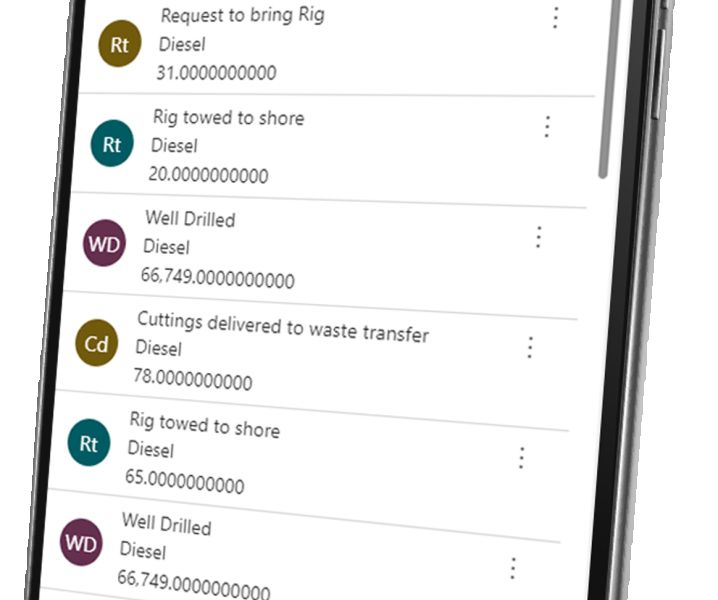Simply put, carbon intensity is a measure of carbon dioxide and other greenhouse gases (CO2e) per unit of activity, like generating a product. That product could be anything from the phone we carry around to the fuel used to heat our homes.
In our daily lives, carbon intensity is often seen as a measure of how clean our electricity is. It refers to how many grams of carbon dioxide (CO2) are released to produce a kilowatt hour (kWh) of electricity. Electricity that’s generated using fossil fuels is more carbon intensive, as the process by which it’s generated creates CO2 emissions. Renewable energy sources, such as wind, hydro or solar power, produce minimal CO2 emissions once operating, so their carbon intensity value is much lower.
What that simplified understanding of carbon intensity applies is boundary for the which the reporting figure is taking place. A carbon intensity figure for wind power would often be based upon operational emissions only, disregarding the emissions from the infrastructure development. As the true carbon emissions related to any activity are increasingly required by regulations such as the European Union’s Corporate Social Reporting Directive (CSRD), it falls upon all organisations to understand the true carbon footprint of their products and services.

Carbon intensity contributes towards this overall carbon footprint as the energy we consume today, and in the future, will have a carbon intensity associated with that energy from its production. When we think of burning natural gas there are obviously some variations in the composition of the gas between methane, ethane, propane, butane etc., but more significantly in the CO2e released during the production of the natural gas. Production methods, leakages, transport all contribute to an unequal carbon intensity associated with the same m3 of natural gas.
When companies use DEFRA or GHG Protocol emission factors for fuel consumption they are using the best available figures as every user cannot calculate the upstream scope 3 emissions of the fuel production. However, these figures quote back to 2015 studies for those upstream scope 3 figures and don’t incorporate any site or country specific variations. As the oil & gas industry begins to tackle reporting of scope 3 emissions, more accurate well to tank figures will become available to the user, and more accurate carbon intensity of the products they use can be determined.
Why does this matter? Well, in short, we know we need to transition from burning fossil fuels, but we need to do so in an engineered fashion, with sources of production with high carbon intensity eliminated first. It is widely accepted that the carbon intensity of Norwegian production is some of the lowest globally, and Turkmenistan some of the highest, but is being accepted the same as being auditable and verified? Indeed, gas supplied to Germany until recently contained a varying percentage of Turkmen gas mixed with Russian gas prior to piping to Germany, resulting in a highly variable carbon intensity.
Coming back to the EU’s CSRD and its Carbon Border Adjustment Mechanism (CBAM), the CSRD requires reporting organisations to think about their products within the “value chain”, understanding the environmental impact of production, use and recycling/disposal. The CBAM essentially mirrors the EU ETS and operates by imposing a charge on the embedded carbon content of certain imports into the EU equal to that charged on domestically produced goods under the ETS. Its phased introduction from 2024 will see areas such as fertiliser, steel and hydrogen early products impacted. The EU ETS over the phasing in period will remove the free ETS allowances in those same areas to deliver a level playing field for producers. What that means however is global average carbon intensity figures for production are not usable, the carbon intensity of actual production is required, and indeed it needs to be verified by an approved CBAM emissions audit.
An example of this would be fertiliser production; the carbon intensity of ammonia production is already highly variable globally from monitored Norwegian gas production to unmonitored Russian production through to coal gasification in China. Producers of fertiliser will need to be able to have a verified carbon intensity of the production specific to the production site, or risk paying excessive carbon border charges when information is not available. Many EU fertiliser production organisations support the introduction of the CBAM to level-up the playing field with imported goods, but it all requires verifiability - if the carbon intensity figures are untrustworthy or overly based on estimates, the CBAM cannot be truly effective in its goal to reduce carbon emissions.
This brings us on to another product on the initial list for the CBAM, that of hydrogen. Currently the global green race between the US, EU and China is targeting hydrogen as a key enabler of the energy transition. The US Inflation Reduction Act’s 45V production tax credit is meant to incentivise the deployment of low carbon hydrogen, accelerating the learning curve and enabling costs to decline. Based on tax credits, the highest credits are for the lowest carbon hydrogen and can reach up to US$3/kg. However, this is subject to the carbon intensity of hydrogen, the measurement of which is still to be finalised but has carbon intensity as the fundamental metric, not the source of production. What cannot be forgotten with hydrogen is its global warming potential – leaked hydrogen is not only an explosion risk, it is a contributor to global warming with a GWP of 11 (which equates to 11 x worse than Co2 per tonne). As we develop hydrogen infrastructure, target ammonia conversion for shipping and build pipeline backbones across Europe, we need cognisant of the energy consumed in transport, storage and conversion alongside the leakage which will need reporting as a GHG on emission reports in the not-too-distant future.
So, carbon intensity matters, and it should be front and centre on decision making for the energy transition to avoid us going down blind alleyways that don’t have the desired effect on reducing our overall carbon footprint.
Related Services